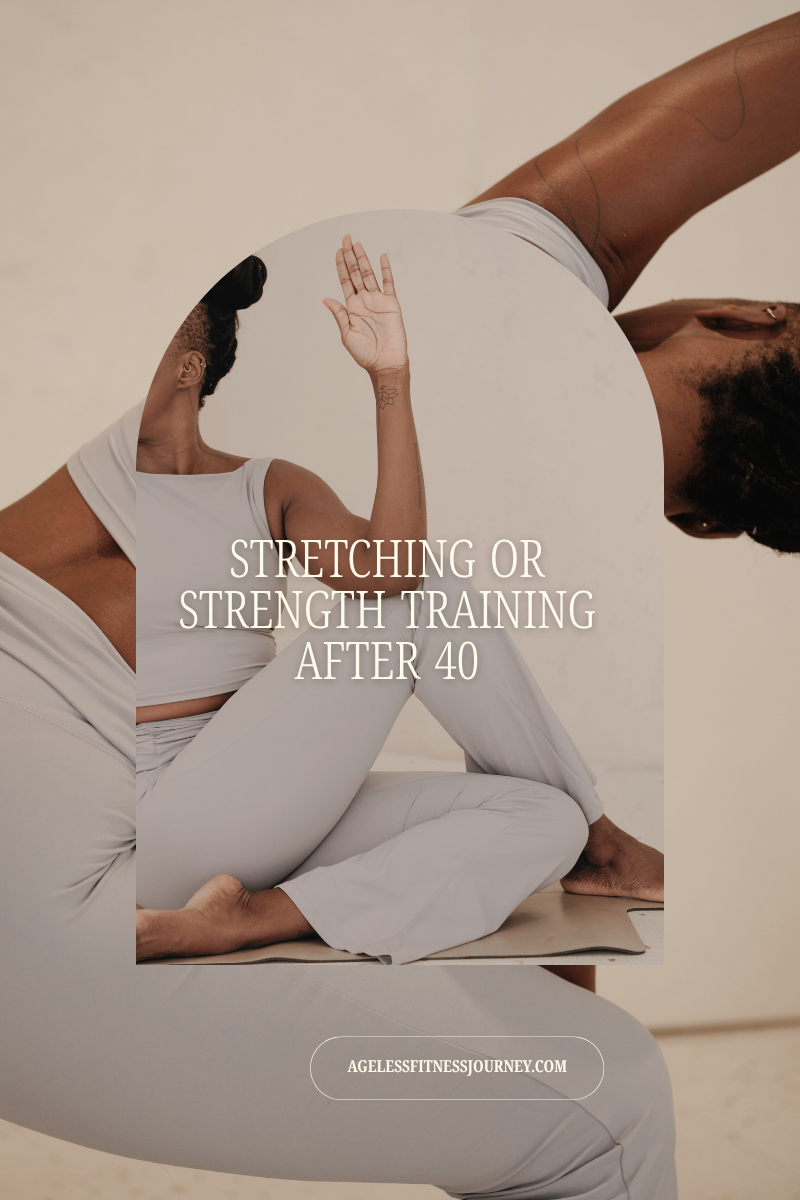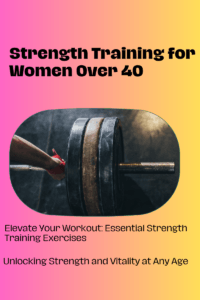What Matters Most?
You’ve made it to your 40s. You’re wiser, more grounded, and you are more aware of every snap, crackle, and pop in your joints. So, when it comes to fitness, your priorities should shift. Your priority is no longer chasing a number on the scale. You now want to feel strong, stay mobile, and take care of your body.
But one question keeps coming up:
“Should I focus more on stretching—or strength training?”
Let’s talk about that. The answer isn’t just about fitness. It’s about what helps you feel good and function well in the place where you are currently in your life.
A Quick Reality Check: What Changes After 40
As we age, our bodies become a little more discerning. Muscle mass naturally decreases, joints may feel stiffer, and your flexibility isn’t what it used to be. Add hormonal shifts to the mix, and suddenly you’re dealing with new challenges in energy, weight, and recovery.
But it’s not about slowing down, but about being smarter with your movement. What worked at 25 will not work at 45. With the right combo of stretching and strength training, you will be fine.
Why Stretching Still Deserves a Spot in Your Routine
Let’s start with the feel-good stuff: stretching. Whether it’s a morning stretch or a post-workout cool-down, stretching helps keep your body open, flexible, and free from tension.
Here’s what consistent stretching gives you:
- Easier movement and greater flexibility
- Better joint health, especially in your hips, shoulders, and spine
- Fewer aches and stiffness (especially after sitting too long)
- A calm, grounded feeling—perfect for stress relief
Stretching is a low-impact activity, and if you’re working with sore muscles or have a busy week, it’s a great way to stay connected to your body without overexertion.
But it’s not enough to carry out your entire fitness plan, though.
Why Strength Training Becomes Essential After 40

Here’s the truth: if you’re not building strength, you’re losing it.
Starting in our 40s, we lose muscle at a faster rate unless we act. Resistance training is something”. And no, you don’t need to go to the gym five days a week. However, you do need to do some form of resistance training.
Here’s what strength training does for you:
- Maintains muscle, which supports balance, posture, and strength
- Increases bone density, protecting against osteoporosis
- Boosts your metabolism, making it easier to maintain a healthy weight
- Prevents injury, especially to your back, knees, and hips
- Build confidence, both physically and emotionally
Think about the everyday tasks that feel harder lately, such as climbing stairs, lifting groceries, and even getting up from the floor. Functional strength training helps you with everyday tasks.
Why Stretching Alone Isn’t Enough
If you’re relying on yoga or stretching as your only form of movement, here’s what you might be missing:
- Muscle loss, which leads to weakness and fatigue
- Slower metabolism, making it easier to gain weight
- Weaker bones, especially post-menopause
- Poor balance, increasing the risk of trips and falls
Stretching keeps you flexible, but it doesn’t build resilience. That’s where strength comes in.
The Risks of Strength Training Without Stretching

Of course, skipping stretching completely has its downsides as well. If all you’re doing is lifting without recovery or flexibility work, you might notice the following:
- Tight, overworked muscles
- A higher chance of injuries
- Lingering soreness
- Limited range of motion over time
What to do? Let stretching boost your strength—not replace it.
What the Right Balance Looks Like
You don’t have to choose one over the other. Instead, think of strength training as the main course and stretching as the side dish that makes the meal complete.
Here’s a sample weekly schedule that keeps things easy but effective:
| Day | Focus |
| Monday | Strength training + short stretch |
| Tuesday | Walk or low-intensity cardio |
| Wednesday | Strength training + targeted mobility |
| Thursday | Stretching or gentle yoga |
| Friday | Strength or circuit workout + stretch |
| Saturday | Rest or foam rolling/mobility |
| Sunday | Nature walk + deep stretch |
This kind of rotation helps your body stay strong and fluid without feeling overwhelmed.
Not Sure Where to Start? Check this out…
Starting something new can feel really intimidating, but don’t make things too complicated. You don’t need fancy, expensive gear or a gym membership for that matter. Here’s a simple way to begin:
- Use your own body weight—squats, planks, push-ups (wall or modified) are perfect
- Try resistance bands if you want gentle resistance without heavy weight. Check out this resistance band on Amazon.
- Focus on form first, not intensity (very important)
- Keeping sessions short—20 to 30 minutes twice a week is perfect to start
- Finish with gentle stretches for the areas you just trained (quads, shoulders, arms, etc.)
👉 Need a beginner-friendly guide? Don’t miss No Equipment Workout for Women over 40.
Let’s Wrap It Up
Stretching feels great. Strength training is essential.
If you’re serious about aging well, staying active, and making the most of your life with energy and strength, then incorporating resistance training into your lifestyle is essential.
You don’t need to overhaul your life or live in a gym. Just a few consistent steps each week will keep you strong and supported.
Your 40s aren’t a crisis. They’re a comeback.
~Kay~



